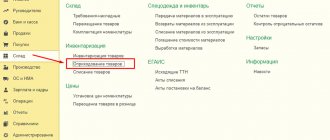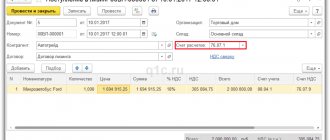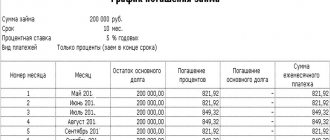The current legislation of the Russian Federation provides for the employer’s obligations to provide subordinate employees with comfortable and safe working conditions for life and health. In order to comply with the requirements of the law, each employer is required to conduct various types of briefings with its subordinates. But initially, upon starting a job, an introductory briefing must be conducted with the employee within the first 3 days.
It is mandatory for all organizations, regardless of their structure, for all types of production. The employer takes all possible measures to prevent emergency situations that threaten the health of the employee, traumatic emergency situations, and emergency situations that are dangerous to the normal work process and life of workers. It is the very first procedure that every employee must undergo before beginning to perform the duties assigned to him at a new workplace.
This article will tell you about the rules for conducting this briefing, clarifying its main features and consequences in its absence or improper organization.
Who conducts
The person who conducts the instruction is appointed by order of the head of the enterprise. Ideally, this is a full-time occupational safety specialist. If the organization does not have one (for example, if the number of employees is less than 50 people), induction training can be carried out by a person to whom these responsibilities are assigned by order of the head of the organization, who has been trained in a specialized organization accredited in accordance with the Order of the Ministry of Health and Social Development of Russia dated 01.04. 2010 No. 205n.
The head of the organization, who is its only participant with whom an employment contract has been concluded, can conduct an introductory briefing for himself (letter of the Federal Service for Labor and Employment No. PG/08346-03-3 dated April 27, 2017).
When does induction training take place?
Induction training will be carried out by a specialist authorized to do so by order of the manager with each initially employed employee, regardless of his position and rank. This list of applicants will include:
- employees who have begun to perform their work duties in a new place for the first time;
- employees rehired to this place of work after dismissal;
- seconded employees;
- undergoing internship;
- employees from other companies carrying out some assignments in another organization.
If a person comes to get a new job, then he is in a state where he is completely unfamiliar with the new working conditions. These circumstances should not negatively affect the quality of his official duties, including their safe performance. Therefore, the main task of the induction briefing is to introduce the new employee to all the intricacies of the safe performance of his job duties at a new place of work and in new conditions, without creating health-threatening conditions for both himself and others. Such briefing is a conversation that is held with a newly arrived member of the workforce personally or together with other hired employees. During this conversation they get the idea:
- general information about the organization, type of activity, location, branches, if the employee, due to his duty, will have to work closely with other structural separate divisions;
- personal workplace;
- internal labor regulations;
- general requirements for work and rest discipline;
- other features of the work process in the new place.
ATTENTION. Induction training is carried out once with an employee at a new job.
It does not need to be done again when the employee is transferred to a new position or upon returning from vacation. An exception would be if the dismissed employee was rehired. After dismissal, induction training is carried out with him as with a newcomer.
Where is it held?
Introductory training is carried out in the occupational safety room or in a specially equipped room using modern technical training aids and the necessary visual aids that meet the content of the program and taking into account the specific conditions of the enterprise.
To increase the efficiency and clarity of introductory briefing, as well as the assimilation of the material by the instructees, advanced training technologies, visual aids (posters, mannequins, mock-ups) can be used during the briefing, multimedia technologies can be used, presentations can be made, and training videos and films can be viewed.
Introductory Instructions
Introductory safety training is carried out for new employees of the enterprise. Please note that these lectures should be conducted not only for key workers, but also for people replacing absent employees, student interns, apprentices and seconded workers representing third-party organizations. Responsibilities for conducting training are assigned to the director of the enterprise. It should also be said that the rich work experience of a new employee is not a basis for canceling a lecture.
According to the Labor Code, it is necessary to conduct an introductory course for students of educational institutions, before conducting practical or laboratory classes. Also, introductory lectures are necessary before military personnel practice exercises at a training ground. As practice shows, large organizations involve experts from various services in developing an introductory lecture. In companies with a small number of employees, the development of the induction program is carried out by the head of the organization. This responsibility may also be assigned to a representative of the HR department. The basis for starting the development of an introductory course is the corresponding order issued by the head of the enterprise. The job description must contain all information related to the safety of fulfilling job obligations in accordance with the specifics of production.
After the lecture, the person in charge should test the knowledge of employees. Such a check should be personally supervised by the head of the company. An employee who has completed an introductory safety course should understand the meaning of warning signs and be familiar with the location of fire safety equipment. After giving the lecture, the instructor is required to fill out the appropriate log, where the new employee puts his signature.
Logbook
After the induction training, it is necessary to make an entry in a special registration journal: the date of the training, the details of the person being instructed and the person instructing, as well as the division of the company where the employee is employed. Records must be certified by the signatures of the person being instructed and the person instructing (clause 2.1.3 of the Training Procedure).
In addition, a record of the initial briefing is made in the personal training card, if applicable (Appendix A to GOST 12.0.004-2015 (Form A.2), clause 6.11 of GOST 12.0.004-2015).
It should be noted that the forms of the registration log and personal card for completing occupational safety training are given in Appendix A to GOST 12.0.004-2015 (forms A.4 and A.2). However, they are not mandatory, but recommended, so each company can develop more convenient forms for itself.
The training is considered completed only after registration in the journal. The start date of its maintenance must be indicated on the title page of the journal.
When the magazine ends, the end date is indicated on the title page and the magazine is handed over to the organization’s archives or stored with a responsible person. The storage period for the journal is not regulated by law. But it is worth considering that data on the induction training is attached to the accident investigation materials.
Program approval
The developed program is approved by the head of the organization or the head of the labor protection service, if it exists in the organization. To approve the program, you must issue an order for the organization, the number of which is mentioned on the first title page of the program, and also confirm it with the personal signature of the person who makes the approval and put a stamp.
ATTENTION! Sometimes, the induction program will need to be agreed upon with the trade union or certain specialists of this organization. Endorsement is carried out in accordance with the procedure approved by current legislation.
Safety precautions in catering establishments
Particularly important is the issue of safety precautions at food enterprises; the entire range of measures aimed at preventing injuries automatically applies to products, that is, to what is supplied to the population in the form of food. In addition to the instructions described above, catering employees need to be healthy and pleasant. For this purpose, an annual medical commission is provided.
One of the most important requirements is keeping the skin clean. Manipulating near the stove or actively moving, delivering heavy food deliveries to waiters around the hall, promotes the release of sweat, which can gradually become one of the causes of the appearance of spots or purulent boils. Therefore, employees, especially those in professions such as cooks, pastry chefs, and waiters, are advised to take a shower with soap before and after all operations. You also need to be very careful with your hands, as open areas they become carriers of diseases (salmonella dysentery) and worm eggs. To prevent this situation, you need to wash your palms and bare areas of your arms up to the elbows:
- after visiting the toilet:
- before starting work;
- before and after handling raw materials;
- transition to prepared food after contact with products.
In addition, waiters must have well-groomed nails with a production manicure, which requires the use of colorless varnish and a length of no more than 2 mm.
Meat shop
In addition to general safety precautions at the enterprise, the functioning of the meat shop has some specifics. Operators must clearly know how the equipment operates and follow mandatory instructions on practical techniques for using the equipment. Extracts from the operating rules and indications of emergency stops of equipment and power outages must be in a visible place. The floor covering should be free of protrusions and not slippery.
When operating equipment, you must be familiar with the safety precautions at the enterprise, which require that you follow the general rules:
- When manipulating the meat grinder, be sure to install safety rings; the meat is pushed through only with a wooden spatula;
- Do not turn on the cutter with faulty limit switches;
- Change the attachments of the universal drive only after it has stopped completely, making sure that the switch is in the “off” position;
- Searing poultry and offal is permitted only on special stoves with forced ventilation;
- The fish is removed from the bath only with perforated scoops;
- The meat is deboned in a protective chain mail;
- Meat knives should be stored in a separate place and have well-attached handles;
- Bathtubs and tables should have rounded corners.
During operation, waste is periodically removed and the rules for maintaining workplaces are observed. After completing the manipulations, the machines are thoroughly washed, the chopping stool is scalded with boiling water and covered with salt. Hooks for hanging carcasses should be at a height of no more than 2 m from the floor.
Occupational safety during operation of technological equipment
Carrying out safety procedures at a plant equipment includes primarily electrical safety. Persons who have been trained in electrical safety and familiarized with safety precautions at the enterprise are allowed to operate electrical equipment.
All mechanisms associated with electricity must be grounded, that is, the housing must be connected by separate metal wires to a ground electrode, which is buried deep in the ground. This measure is necessary to protect workers in the event of a breakdown of the conductor insulation on the housing. Thanks to this, the current does not flow through the human body, but through the ground electrode. In front of electrical panels, switches, and line switches there should be an inscription: “High voltage - dangerous to life.” Three-phase and single-phase sockets must be labeled in large letters indicating the voltage value suitable for it, for example, 220V, 380V. It should be remembered that the danger of electric shock increases with humid air, so one of the electrical safety measures is to ventilate the room in order to reduce sweating of the walls and the mechanism body
Repeated lectures
Repeated lectures are held only for those workers who are not included in the category of workers exempt from undergoing initial training. The frequency of this event is once every three months. In some cases, enterprises agree on the timing of repeated lectures with regulatory authorities. The maximum interval between lectures, subject to an agreement with state supervision, is twelve months.
The purpose of repeated lectures is to identify the level of knowledge of workers about labor safety standards, sanitary standards and rules established by the fire inspection. Carrying out such events is necessary to increase the level of knowledge of company employees. This type of training can be conducted either in small groups or with each employee individually. Most often, lectures are held for groups united by one specialty. This training program uses information from their initial instruction.
Reasons for holding
The main reasons for conducting this type of briefing are unplanned situations, namely:
- changes in legislative norms, adoption of new ones;
- arising as a result of violation of safety and health rules by anyone from the team;
- the corresponding requirement of higher authorities and inspection authorities;
- significant adjustments to the internal regulations and production process of the enterprise;
- the emergence of factors that may affect the safe work of workers (for example, the use of new high-tech machines and labor tools);
- changes related to organizational aspects of work activity (for example, internship in a hospital for students of a medical university);
- transfer of a worker to another workplace (especially if it has a different hazard class);
- the case when, after a long break, an employee resumes his duties.
If the field of activity of a business entity is harmful, the break cannot last less than 30 days, in all other cases - less than 60.
An exhaustive list of reasons is contained in Resolution No. 1/29.
Occupational safety in catering
compliance with safety regulations at the enterprise is directly related to equipment that has reciprocating moving or rotating movements of working parts; such mechanisms must have fences with warning signs, an alarm system and door locks. Before starting the equipment, you must make sure that the working chamber is empty, the working body or moving parts are free, and there are no foreign objects. it is necessary to inspect the place in front of the mechanism, there should be no foreign objects there, put the overalls in order, paying attention to the hanging parts. Check the serviceability of the electrical wiring, starting equipment, reliable connection of the replaceable parts of the machine; before starting, you must turn on the machine at idle speed and make sure that all mechanisms are functioning clearly and correctly. Only workers who have been familiarized with safety precautions at scientific centers are allowed to access the mechanisms. The organization of safety precautions at an enterprise is a very important element in the functioning of the entire mechanism. People, feeling safe, perform the necessary actions much faster and better. It is not without reason that control over the organization of safety precautions at an enterprise is carried out by the Federal Labor Inspectorate.
| Attention Bearing Buyers Dear customers, send your questions and requests for the purchase of bearings and components by email or call now: Delivery of bearings throughout the Russian Federation and abroad. Bearing catalog on the website |
Attention Bearing Buyers
Dear customers, send your questions and requests for the purchase of bearings and components by mail or call now: tel: +7 (495) 646 00 12 [email protected] Delivery of bearings in the Russian Federation and abroad. Bearing catalog on the website
themechanic.ru
Prosecution
Since ignoring timely instructions can lead to irreversible consequences, including major accidents and industrial accidents with fatal consequences, for the officials responsible this is fraught with a fine of 15-20 thousand rubles in accordance with the third part of Art. 5.27.1 Code of Administrative Offenses of the Russian Federation.
If a similar violation is repeatedly detected, the sanctions are tightened by increasing the amount of fines or suspending the activities of the enterprise for up to three months (the fifth part of the same article).
What is important to know?
According to current legislation in this area, the employer is personally responsible for maintaining safety in production processes. His responsibilities include regularly conducting several safety training sessions. This must be done with all, without exception, employees of the enterprise or organization where, according to the staffing table, the official is in charge.
Any of the presented briefings is generally a specific form for training employees of an enterprise or organization in the basics of safe work practices. Also, these regulatory documents provide for the behavior of workers in production in general, and this also applies to each individual section. Therefore, great attention is paid to this issue in every production.
You should also know that safety training should be carried out with each person working in production or in an organization. Such events will be carried out throughout the entire period of work. The form may vary. There are individual and there are also collective safety briefings. At the same time, their management will not indicate the type of activity that is carried out in the organization or in production. There is also no dependence on the form of ownership of such an object.
If the enterprise is large, then conducting briefings can be entrusted to a separate specialist who has undergone appropriate training in licensed organizations. To do this, the head of the enterprise issues an appropriate order. In most situations, this person is either a labor protection engineer or a safety specialist.
Everyone, without exception, working in enterprises or organizations must undergo training. Particular attention is paid to energy-type objects. The list includes employees and managers of enterprises.
At the same time, closer attention should be paid to those employees whose work experience does not exceed one calendar year. This approach also applies to workers with extensive practical experience and relevant length of service. This was done because, according to statistics, such categories of workers are most often exposed to accidents. The reason for this is a violation of current safety regulations. Those who begin their professional activities usually commit these violations due to lack of work experience. Those who have extensive experience in the profession due to their own negligence, which is explained by overconfidence of an excessive type.
In each injury-related incident, the organization’s management, in accordance with current standards, is required to conduct a special investigation. During this event, it is necessary to determine the causes and those to blame for the incident. Next, the necessary order is issued for the organization or enterprise. According to the rules, such an order must be discussed with all employees. This is also a unique form of training for them on these issues.
The form in which occupational health and safety briefings are carried out with employees is established by the person who conducts it - a lecture or an interview. Necessarily
It is necessary to record this fact of training. For this purpose, a corresponding journal is opened in production. In it, the fact of training is recorded against signature. This is done by a special official who records the fact of training and also monitors employees’ compliance with safety rules.
Fire safety technology
General safety precautions at an enterprise include fire safety measures to prevent fires, as well as the procedure for extinguishing open fires. According to fire hazard qualifications, all buildings are divided into 5 categories: A, B, C, D, D. Catering establishments, except warehouses, belong to category “G”. So - how non-combustible substances, that is, products, are processed indoors. Space in attics or basements must be kept clean and free of clutter behind boxes and drawers. It is prohibited to set up archives or warehouses for storing things or materials in the attic; it is also prohibited to dry clothes there and tie television antennas to chimneys. It is prohibited to use flammable materials for insulation: sawdust, peat or other flammable materials. It is prohibited to arrange warehouses in basements for storing flammable combustible liquids, oils, solvents, etc. To ensure compliance with these requirements, special commissions are created that monitor safety measures at the enterprise
Timing of the briefing
The time within which an unscheduled briefing must be carried out is closely related to the reason for its implementation . For example, if the prerequisite was a change in the technological process at the enterprise, then training should be carried out before using the new equipment.
If the cause was an emergency or accident, the deadlines are set by the immediate manager of the enterprise.
To summarize, it should be noted that instructing the team should not be neglected or treated irresponsibly.
All types of briefings are important, and unscheduled ones are especially important, since they are aimed at preventing the occurrence or recurrence of emergency and non-standard situations in the company.
Watch the video about the unscheduled briefing:
Electrical safety briefing
Another mandatory type of safety training is devoted to electrical safety. It depends on whether the employee is an electrical technician, that is, whether his responsibilities include installation, adjustment, maintenance and repair of electrical installations.
To find out whether the company has such employees (from a legal point of view), study Appendix No. 1 to Order No. 328n of the Ministry of Labor dated July 24, 2013. It lists the categories of workers and the conditions for assigning different electrical safety groups.
Legislative regulation
Briefing is an event that is implemented to explain to employees their behavior in certain work situations.
Unscheduled briefing is a type of briefing conducted in situations that go beyond normal work issues. It is often prescribed when there is a danger of an emergency.
The inability to schedule this type of instruction distinguishes it from primary, targeted, or repeat instruction.
The conduct is regulated by Part 2 of Article 212 of the Labor Code of the Russian Federation and special Resolution of the Ministry of Labor and Ministry of Education of Russia No. 1/29 of January 13, 2003.
Unscheduled briefing should be carried out either individually with each team member, or with a group formed from workers engaged in one thing (for example, from one department).
Upon hiring, an introductory briefing is conducted. Read more about it here.










